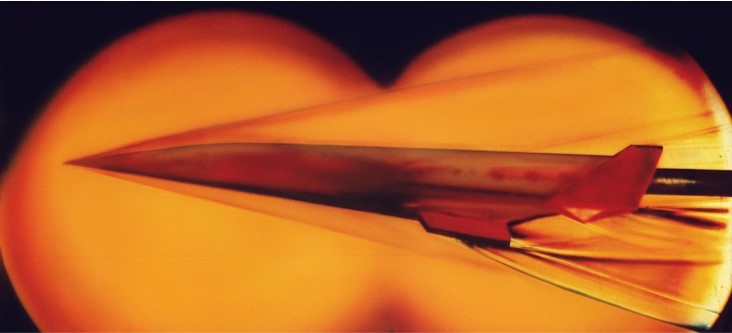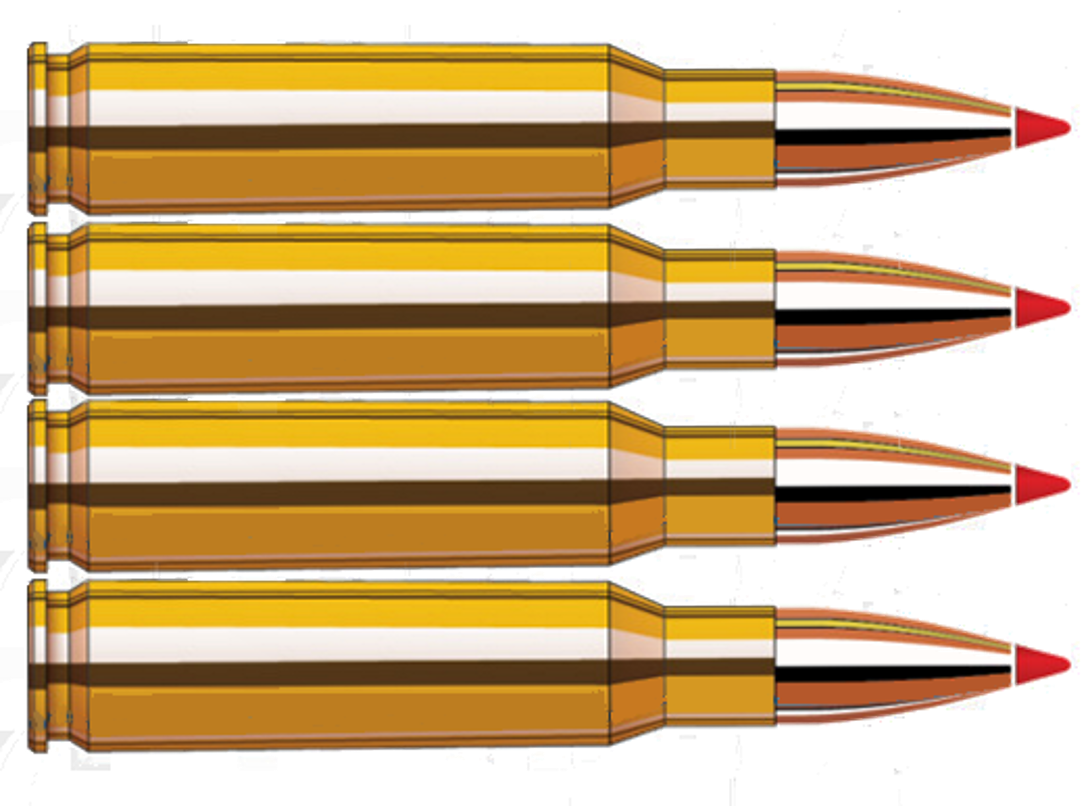It’s the holidays, so we’re giving away a 30mm round casing fired from an A-10 gun! It’s like a game-used jersey, but way cooler.
Each referral you earn gets an entry (use your unique link at the bottom). Bonus: those who sign up also get entered to win!
We’ll announce the winner on December 19th. Fight’s on! |
Get in formation and follow us! |
Kill the Hurricane Hunters? |
This week the 2021 hurricane season officially ends, meaning this topic is no longer off-limits: it’s time to kill the Air Force’s Hurricane Hunters.
What
Based in Mississippi and formally called the 53rd Weather Reconnaissance Squadron, the hurricane hunting mission began as a barroom bet in 1943 between two pilots that challenged each other to fly through a hurricane in a T-6 Texan.
Today the squadron of reservists operate a fleet of 10 WC-130Js.
So What
Priorities become clear when resources are constrained—looming fiscal constraints are expected to put massive pressure on the Air Force to streamline its force structure and operations.
This should force a preference for things that ‘scare China’ at the expense of things that don’t directly contribute to the task and purpose of the force.
Sans emotions, there are three main reasons to consider axing this mission from the Air Force.
1. Not an Inherent Military Mission
Department of Defense Directive (DoDD) 5100.01 is the piece of queep that outlines the functions of the components of the DoD.
Hurricane hunting is nowhere to be found, and for a good reason: the 53rd WRS fulfills a hurricane data requirement for the Department of Commerce—NOT the Department of Defense.
2. Someone Else Has This Responsibility
Did you know there is more than one Hurricane Hunter unit in the government? The NOAA Hurricane Hunters operate two WP-3D Orions and a Gulfstream IV-SP and have been doing the same thing as the Air Force since the 1960s.
Guess who NOAA falls under? Yep, the Department of Commerce. |
 |
3. There Are Better Ways
Technology is changing the game in hurricane data collection. COVID forced NOAA to accelerate a system that removed all metrologists from their aircraft—they now analyze the data remotely from their homes in real-time.
Startup Saildrone makes autonomous ocean vessels that sail into hurricanes to study the environment at the surface, streaming the data to analysts in real-time.
Meanwhile, space startups like Spire Global, GeoOptics, and PlanetIQ are building constellations of radio occultation satellites to measure temperature, pressure, and humidity throughout the atmosphere to feed prediction models. Coincidently, NOAA just released an RFI for a pilot program looking for this type of commercial space-based space weather data.
4. Bonus
Yea, we said there are 3 reasons but we’re in a giving mood. Shedding the 10 WC-130Js from the Air Force would solve another problem: there are too many C-130s. Despite studies done in 2013, 2015, 2018, and 2021 calling for a fleet reduction, politicians have kept their sacred cow untouched.
What Now Perhaps the equipment and mission move to the NOAA. Or maybe the Air Force shifts these newer C-130J variants to units with legacy C-130Hs, permitting these older aircraft to finally go to the bone yard.
It’s nothing personal, but it’s time for the Air Force to shed this mission. Transfer it to the government agency where it belongs and embrace new ways of getting the data needed.
|
In That Number
50.8%
That’s roughly 20% lower than any other fighter in service, but the historic norm for the F-22.
This is a byproduct of small-unit dynamics in a maintenance-intensive fleet that is aging and hitting a bow wave of parts obsolescence issues. It’s not expected to get any better either, which is probably why it’s not in the Air Force’s long-term force structure plan. |
Trivia: This is a picture of a Mach 6 hypersonic aircraft design in a wind tunnel test. It was conducted in the same year as which of the following military movies debuted?
Top Gun (1986)
G.I. Jane (1997)
American Sniper (2014)
The Outpost (2020) |
 |
 |
Israel’s Elbit and Roboteam announced an unmanned ground vehicle called the Rook. One thing that sets this UGV apart is called Torch X. This is an integration app that lets the operator not only control multiple unmanned ground vehicles, but one operator can also simultaneously control a mix of unmanned ground and air vehicles. #mulitdomaindroneoperator
Samsung is going to build a new $17B computer chip plant in Texas. This follows a string of announcements this year to rebuild domestic chip production in the U.S. Intel is spending $20B to build two plants in Arizona and is planning to announce the location of a whopping $100B chip foundry soon. What’s driving this: 60% of the world’s computer chips are produced by foundries in Taiwan—the island caught in a tug of war between China and the U.S.
A tale of two Space Force cultures. A market sector known as On-orbit Servicing, Assembly, and Manufacturing (OSAM) is a growing commercial space sector and is now embraced by NASA. This is also the fundamental purpose of the Space Force’s new ‘Orbital Prime’ program. But…the space logistics and robotics lead at the Air Force Research Laboratory (which supports the Space Force) acknowledges that parts of the Space Force have a culture problem and is discounting the idea as a future fantasy. Umm, it's already happening. |
They Said It
“I would say it is unlikely at the moment that China changes from a ‘challenge’ to an ‘adversary’ in the Strategic Concept. China is not physically adjacent to the Euro-Atlantic area, which is the geographically bounded area defining the NATO alliance.”
— Adm. Rob Bauer, of the Royal Netherlands Navy and NATO’s most senior military officer.
SMH. |
The Defense Entrepreneurs Forum is creating a living DoD Innovation Ecosystem Map to literally connect the dots from all the disparate innovation efforts throughout the Department of Defense. Check out the living model here (where you can also submit additions). This is the screenshot. |
The HGU-55/P is the standard-issue fighter/bomber pilot helmet in the U.S. Air Force. It’s also a 1980’s design that hasn’t really changed at all. Zoom in here for an in-depth first look at Lift Airborne Technologies’ Next Generation Fixed Wing Flight Helmet that is currently in test to replace the Reagan-era brain bucket. |
 |
- Italy's air force chief made a contentious prediction that UK’s 6th gen Tempest fighter program will merge with the rival Future Combat Air System designed by Germany, France, and Spain
- BAE Systems signed a deal to purchase US-based software company Bohemia Interactive Simulations (BISim)
- Australia formally signed the ENNPIA (Exchange of Naval Nuclear Propulsion Information Agreement), a key part of the new AUKUS pact, and the thing that pissed France off months ago
- Voyager Space acquired a majority stake in Space Micro, a supplier of space electronics and satellite components
- Nanoracks announced they are on track to set a new record by deploying the first-ever 0.3U CubeSat from the International Space Station—a satellite the size of a cherry
- The Air Force released an RFI for developing and integrating a beyond-line-of-sight weapon data link into the AGM-158 Joint Air to Surface Standoff Missile (JASSM)
- Canada notified Boeing that its F-18 will not be in the running for the country's next fighter, setting the stage for the F-35 to re-win
- Northrop Grumman committed $12.5 million to Virginia Tech’s quantum information science and engineering department
- Pangea Aerospace revealed they tested a subscale difficult-to-develop aerospike engine
- Sikorsky’s $5B VH-92 presidential helicopter program suffers more delays after failing to meet reliability, availability, or maintainability threshold requirements
- Rolls-Royce claimed it set a world record for the fastest all-electric airplane at 345.4 mph
- Astroscale raised $109 million in a new Series F round to continue maturing its on-orbit servicing tech
- Cognitive Space raised $4 million in seed funding for its AI-based software designed to manage imaging satellite constellations, on the heels of a $1.7 million Space Force prototype contract
And finally...
- Interesting: China just completed construction of a Mach 8 hypersonic wind tunnel
- Compelling: Next year, China will complete construction of a Mach 30 high-hypersonic wind tunnel
|
Have friends who'd love the Merge too? Give them your unique referral link and start earning rewards when they subscribe.
Your unique referral link:
You currently have referrals
|
Trivia Answer: Top Gun, 1986. Source |
Get in formation and follow us! |
|
|
|
|